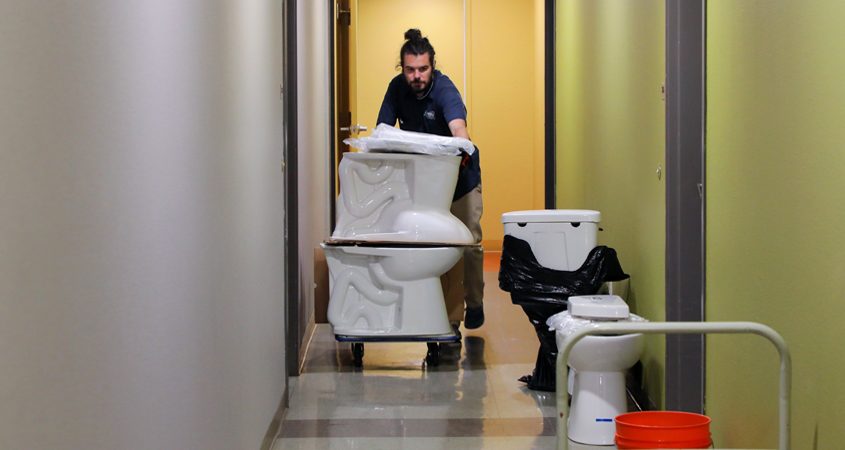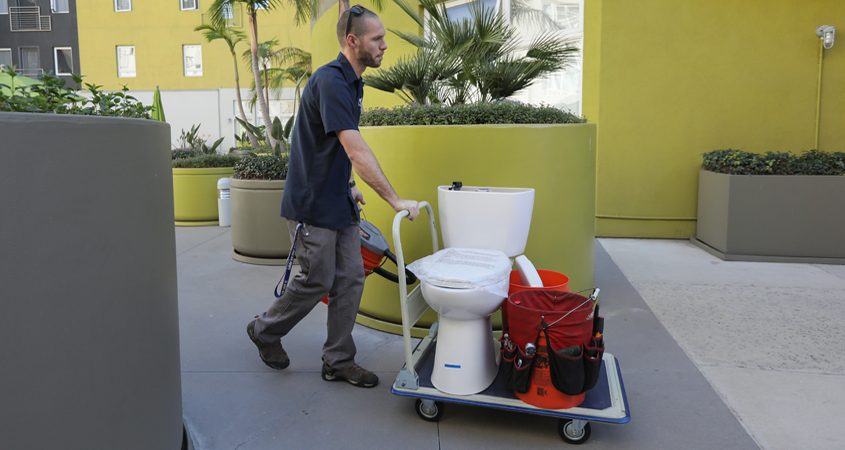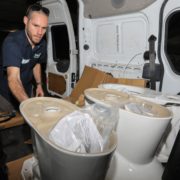The San Diego County Water Authority’s water-energy partnership with San Diego Gas & Electric is seeking $1.8 million in additional funding through 2026 to continue saving water and energy for thousands of income-qualified residents across the San Diego region.
For more than 25 years, the Water Authority’s Water-Energy Nexus Program, or WEN, has maximized energy savings while supporting water efficiency in the San Diego region. SDG&E and the Water Authority have worked together to trim water and energy use and costs in one of the longest-running partnerships of its kind in California. As part of its role, the Water Authority funds the installation of water efficiency devices for eligible customers and communities.
Water savings benefit the entire region

Adding water-efficient upgrades will help meet long-term regional conservation goals. Photo: San Diego County Water Authority
Toilets account for nearly 30% of a typical home’s indoor water use. The WEN Program increased water efficiency by replacing inefficient fixtures with state-of-the-art water-saving devices in disadvantaged communities.
“The Water Authority is committed to helping the San Diego region make the most of our water supplies through a variety of innovative programs,” said Kelley Gage, director of the Water Resources Department at the Water Authority. “Through our partnership with SDG&E, we extend help to families that might not be able to afford these environmentally friendly upgrades without support.”
SDG&E’s Energy Savings Assistance Program installs both water- and energy-saving measures in single-family, multifamily, and manufactured homes. The Water Authority reimburses SDG&E for water-saving devices installed by its contractor, Synergy Companies. This partnership has received funding to continue through 2025.
Installation of high-efficiency toilets and irrigation controllers is a collaboration with SDG&E’s Multifamily and Manufactured Housing Programs, which was recently approved for four more years of funding.
Financial barriers to long-term conservation removed

Removing upfront costs helps all residents benefit from water-efficient fixtures in the home. Photo: San Diego County Water Authority
Low-income residents are sometimes unable to participate in water and energy conservation programs due to the upfront costs. The Water Authority’s program invests in water-efficient upgrades upfront. Adding funding capacity for additional retrofitting will help meet long-term conservation goals.
For more water-use efficiency resources, go to WaterSmart.SD.org.





